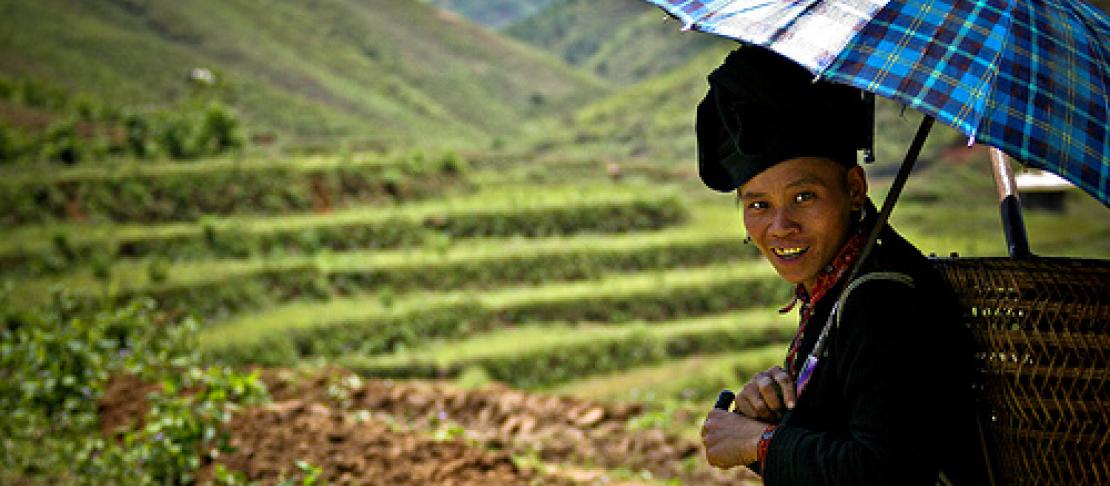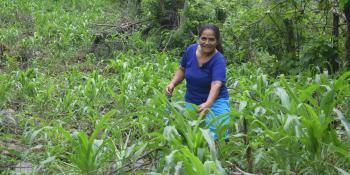How constraint breeds creativity: farmer-led alliances for rice

by Sonja Vermeulen
Participatory plant breeding has matured into a dynamic and cost-effective science that provides a pragmatic match between desired crop traits and local climates, soils and socio-economies. But can farmer-led crop breeding deal with the pace and uncertainty of climate change? Absolutely, argues the recent article Institutional and technological innovation: understanding agricultural adaptation to climate change in Nepal by Netra Chhetri, Pashupati Chaudhary, Puspa Raj Tiwari and Ram Baran Yadaw.
Since the 1960s, Nepal has registered 62 new high-yielding rice varieties. The intervening decades have seen rice breeding evolve from top-down approaches, through a phase of farmer testing, to the current model in which farmers take the lead in designing, conducting, interpreting and applying research – which the authors rightly celebrate as a remarkable development. Other authors record that farmers have simultaneously strengthened their intellectual property rights: the registration of rice variety Pokhareli Jethobudho in 2006 was Nepal’s first legal acknowledgement of farmers as co-owners of an improved variety.
Alliances – both within communities and with external organisations – are at the hub of participatory breeding. Chhetri and co-authors posit that the “cultural endowment” of local institutions is crucial. Women’s groups, for example, ensure that breeding addresses not just climate-compatible traits but consumer preferences like flavour, aroma and water absorption. NGOs, universities and the CGIAR are established partners too, contributing to and learning from the genetic and agronomic innovations that go hand-in-hand in farmers’ breeding programs.
Advantages of farmer-led breeding for climate change adaptation are plentiful. The eight to ten cultivars a typical Nepali hill farmer cultivates offer a fundamental source of resilience to climate variability. Local and scientific knowledge can combine to track climate trends and select traits with considerable sensitivity and quick response times. Farmer-led breeding has demonstrably closed the yield gap between climatically marginal and higher-suitability rice growing areas in Nepal. Other pertinent research on barley shows that, despite the many partners and processes involved, participatory breeding is 5-28% cheaper than conventional methods, mainly because it produces equivalent genetic material three years earlier.
But are there drawbacks to “induced innovation” in crop breeding in response to changing climatic conditions? Perhaps the foremost risk is that climate change will surpass the limits of adaptability in local varieties and their wild relatives to heat, drought, disease, waterlogging or salinity. Here lies the value of scientific partners: to propose breakthrough technologies that might fit into local innovation systems. A related concern is whether disconnected local breeding programs can generate enough momentum and geographic scale in adaptation. Here knowledge networks surely deserve strategic investment: to share emerging approaches while avoiding top-down implementation.
Sometimes emphasis on partnerships can sound hollow, giving little guidance on which actions and systems should be supported. But the experience and promise of participatory breeding in climate change adaptation, both in Nepal and in other countries, show just how much alliances matter in generation of practical, dynamic, cost-effective knowledge. To reach scale and pace in adaptation we need sustained investment in institutions that link across plural innovations and talents.
Links
- Chhetri, N., Chaudhary, P., Tiwari, P.R., Yadaw, R.B. 2012. Institutional and technological innovation: Understanding agricultural adaptation to climate change in Nepal. Applied Geography 33: 142-150. http://dx.doi.org/10.1016/j.apgeog.2011.10.006
- Halewood, M., Deupmann, P., Sthapit, B.R., Vernooy, P. and Ceccarelli, S. 2007. Participatory plant breeding to promote farmers’ rights. Bioversity International.
- Chhetri, N.B. and Easterling, W.E. 2010. Adapting to climate change: retrospective analysis of climate technology interaction in the rice-based farming system of Nepal. Annals of the Association of American Geographers 100: 1156-1176. http://dx.doi.org/10.1080/00045608.2010.518035
- Mangione, D., Senni, S., Puccioni, M., Grando, S. and Ceccarelli, S. 2006. The cost of participatory barley breeding. Euphytica 150: 289–306. http://dx.doi.org/10.1007/s10681-006-0226-x
This is the October 2012 installation of AgClim Letters, a monthly e-bulletin on science and policy written by Sonja Vermeulen, Head of Research for CCAFS. Sign up to receive AgClim Letters bulletin and read past bulletins. Your comments are welcome below.


